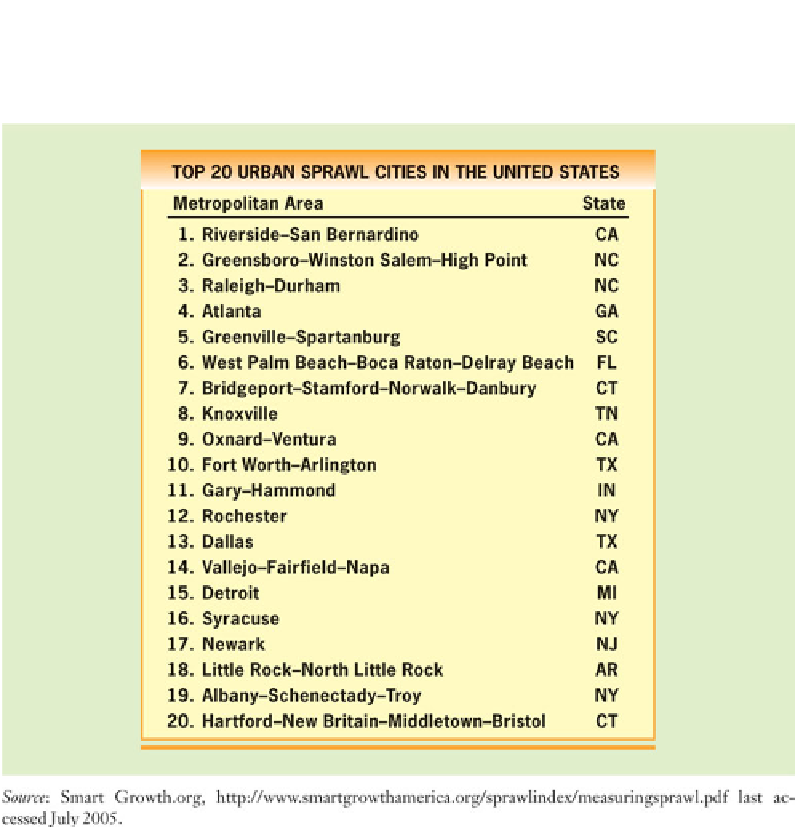Geography Reference
In-Depth Information
TABLE 9.1
Top 20 Urban Sprawl Cities in the United States.
Several different ways to measure sprawl
exist. This index measures residential density, neighborhood mixture of homes, jobs and services,
strength of downtowns, and accessibility to the street network.
For geographers, new urbanism is seen as a redefi ni-
tion of space in the city. Public spaces become privatized
for the enjoyment of the few (the residents of the neigh-
borhood). Geographers Stuart Aitken, Don Mitchell, and
Lynn Staeheli note that as new urbanism strives to turn
neighborhoods back in time, “spaces and social fun
who critique new urbanism, claim that new urbanism does
nothing to break down the social conditions that privilege
some while disadvantaging others; that new urbanist proj-
ects take away much of the grittiness and character of the
city; and that the “communities” that new urbanists form
through their projects are exclusionary communities that
deepen the racial segregation of cities.
Despite the critiques against new urbanism, devel-
opments in the new urbanist tradition are attracting a
growing number of people, and when they are situated
within cities, they can work against urban sprawl.
ctions
historically deemed public (such as parks, neighborhood
centers, shopping districts)” are privatized. The houses
with porches that encourage neighbors to talk and the
parks that are within walking distance for the res
idents cre-
ate “mythic landscapes that are ingratiating for those who
can afford them and exclusionary for those who cannot.”
Noted geographer David Harvey offers one of the
strongest critiques of new urbanism, explaining fi rst
that most new urbanist designs are “greenfi eld” projects
designed for the affl uent to make the suburbs more liv-
able. This fact is evidence, Harvey argues, that the new
urbanism movement is a kind of “spatial determinism”
that does not recognize that “the fundamental diffi culty
with modernism was its persistent habit of privileging
spatial forms over social processes.” Harvey, and others
Gated Communities
As you drive through urban spaces, suburban and central
city alike, you will note more and more neighborhoods
being developed or redesigned to align with new urban-
ist principles. In your inventory of landscapes, even more
overwhelming will be the proliferation of gated commu-
nities.
Gated communities
are fenced-in neighborhoods










































